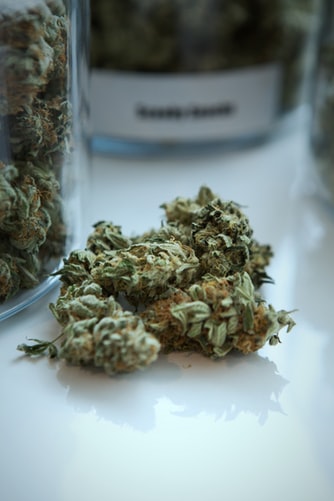U.S, October 30, 2019 (CANNABISTECH) The chemical reaction that removes a carboxyl group, releases carbon dioxide, and activates the potential of cannabinoids.
UNDERSTANDING DECARBOXYLATION
The raw cannabis plant consists of cannabinoids in their acidic form. When one states that cannabinoids are in their “acidic form,” they are referring to the chemical structure of the compound itself. A cannabinoid in its acidic form has a carboxyl group (-COOH) attached. While THCA is the non-psychoactive precursor to THC, it does not bind to the CB1 and CB2 receptors. Instead, it binds with other cannabinoids receptors in the endocannabinoid system. When tetrahydrocannabinol (THC) is not decarboxylated, it is THCA. Although THCA possesses therapeutic effects, like anti-inflammatory and neuroprotective qualities, it is not in its most beneficial or psychoactive form.
TECHNIQUES TO DECARBOXYLATE MARIJUANA
Two main methods are used when decarboxylating marijuana, drying (time), and heat. Drying or allowing the marijuana to age can lead to some of THCA reacting to produce THC, but this typically yields a low THC product. On the other hand, using heat to decarboxylate marijuana is much faster and has a higher-end product. The heat acts as a catalyst (something that speeds up a chemical reaction) in the process of converting THCA to THC. According to an article on Leafly, cannabinoids can be instantaneously absorbed through inhaling when using extreme heat.
Please note, these methods also pertain to other cannabinoid compounds in marijuana, like CBD.
DECARBOXYLATING TEMPERATURES FOR CANNABINOIDS
Each of the cannabinoids decarboxylates at different temperatures. It is recommended that when decarboxylating your marijuana, to err on the side of caution and use lower temperatures, which ensures that some compounds are not degraded. Cannabinoid decarboxylation varies by temperature and duration, with each cannabinoid having an optimal temperature. With this knowledge, the cannabis process can be tailored to produce a desired final product. For example, THC has a boiling point of 315 F. Yet, to differentiate the brand’s product, companies may not want to maximize just THC. With some experimentation, companies can use small amounts of organic material to refine their product and produce desired effects, e.g., maximizing a specific terpene.
WHY DECARBOXYLATE?
Edibles tend to be more popular among consumers. Smoking is the traditional method but also has its downside among recreational and medicinal users, e.g., the smell for one, and consumers risk damage to the lungs. Developing quality standards for edibles starts with the best method of treating the active chemicals in cannabis. There is an abundance of home-use methods for cannabis decarboxylation. Commercial machines continue to develop aspects specific to the cannabis industry, with some of the more reliable machines already being used in chemical labs and tobacco production.
COMMERCIAL DECARBOXYLATION
Commercial decarboxylation machines are still in their infancy. According to HerbCeo, approximately 80% of commercial ovens are designed for industrial/consumable products or engineered with culinary experts in mind. Cannabis requires precision heat control to ensure the proper decarboxylation of cannabinoids and terpenes. Ovens built for culinary or non-consumables tend to sacrifice precision for speed and access. Thermo Fisher Scientific Precision Ovens, Shel Lab Ovens, and Precision Quincy Industrial Ovens are three brands that
have set themselves apart in this industry for their scalability, customization, reliability, and end-user support making them ideal starting points for cannabis start-ups and commercial use.
CONSUMER TECH: ARDENT NOVA
The Ardent Nova is a wonderful little machine that allows consumers to decarb cannabis odor-free. The chamber holds 12 fluid ounces, which is approximately 1 ounce of weed. The chamber heats the plant material and then lets it cool in a controlled way that might prove difficult with a conventional home oven. This process can take about 75- 90 minutes. When the light turns green, you open the device, and the cannabis is ready to be used. The Nova allows the consumer to heat the THC without burning it. It can a bit pricey, ranging from $210 – $305 depending on add-ons. Consumers can learn basic infusing with coconut oil, olive oil, and even caramel. Shanel Lindsay, the creator of the Nova, has received rave reviews for her product and seeks to expand into commercial product develo







